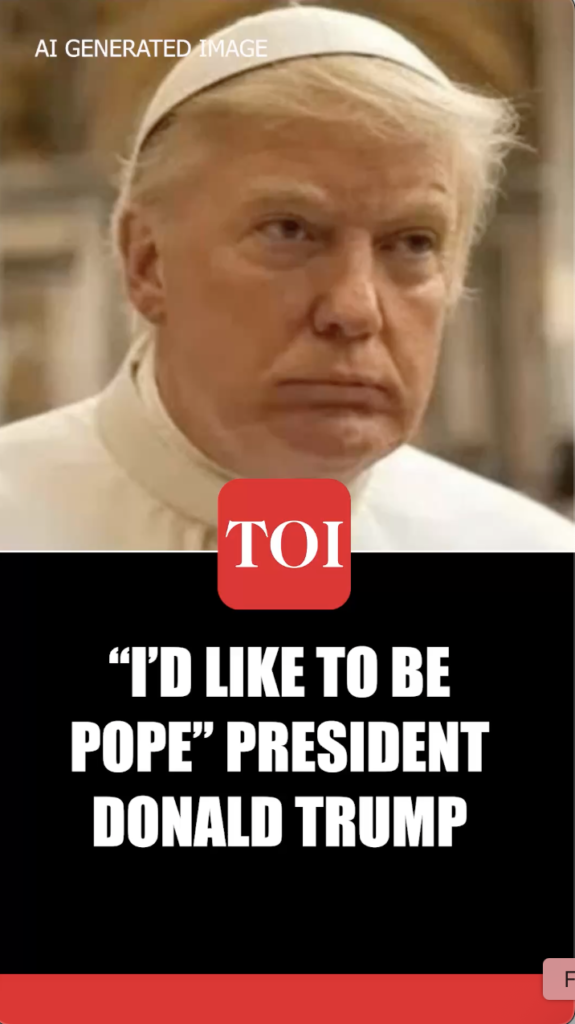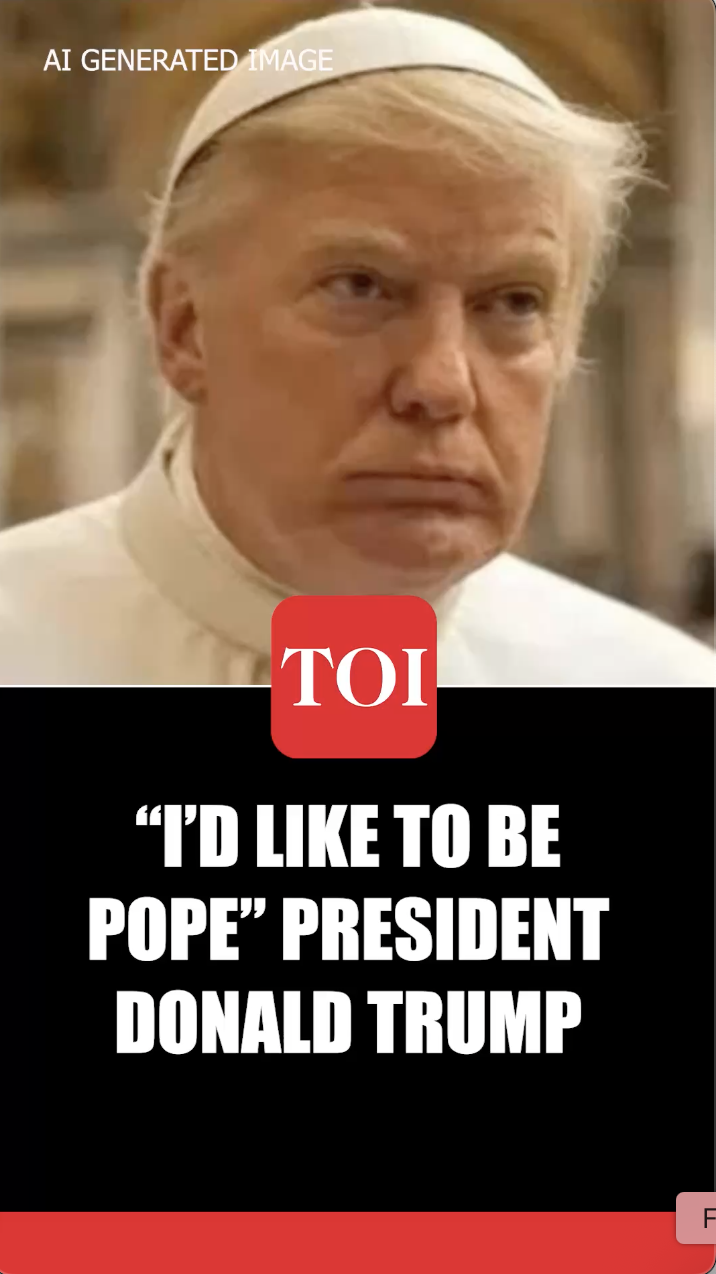Introduction
In a bizarre yet compelling digital twist, AI-generated images of former President Donald Trump dressed as the Pope have gone viral across social media platforms. These deepfakes, powered by tools like Midjourney and Stable Diffusion, have reignited debates about AI ethics, misinformation, and the blurred line between parody and deception. In this blog, we explore the top 5 most talked-about AI images of “Pope Trump” and what they reveal about the future of political satire and visual manipulation.

1. The Golden Robe Trump-Pope
Perhaps the most iconic image shows Trump in an elaborate, golden papal robe, posing regally in front of the Vatican. The AI’s hyper-realistic detailing fooled many viewers initially, highlighting how photo-realistic AI images are rapidly outpacing the average person’s ability to spot fakes.
2. Trump Leading Mass in St. Peter’s Square
This image shows Trump, arms raised in a blessing gesture, seemingly delivering a papal sermon. While obviously satirical to some, the image’s professional lighting and realistic crowd renderings made it momentarily convincing — enough for it to circulate as a possible real event.
3. The White Cloak Confessional Shot
Another viral favorite featured Trump kneeling in prayer inside a confessional, dressed in white robes. The solemnity captured by the AI tool stirred mixed reactions, with some calling it humorous and others calling it “deeply misleading.”
4. Trump and the Vatican Guards
This AI-generated photo depicted Trump walking with Swiss Guards, waving to a cheering crowd. The detail — down to facial shadows and fabric folds — stunned viewers and led to viral tweets debating whether it was a prank or a press leak.
5. The Trump Pope Mural-Style Portrait
Finally, a stylized, Renaissance-style AI portrait of Trump as the Pope went viral for its artistic flair. While clearly exaggerated, the portrait sparked a mini-trend of similar AI-generated “historical” depictions of public figures.

Why It Matters: Satire, Misinformation, or Both?
These images, though often created for satire or humor, underscore serious concerns about the role of AI in shaping public perception. As technology evolves, it becomes harder to distinguish parody from manipulation, especially when images are decontextualized or reshared by bad actors.
Even Elon Musk and AI ethics experts have weighed in, calling for better watermarking systems and digital literacy education to help consumers discern AI-generated content.
Conclusion
The Trump-as-Pope AI image trend is a case study in how fast AI content can go viral — and how powerful, yet potentially dangerous, these tools have become. While some see it as harmless satire, others fear the erosion of trust in digital media. As AI art continues to dominate online culture, it’s up to platforms, developers, and users to draw the lines between humor, truth, and harm.
Curious about the ethics behind AI-generated celebrity art? Check out our article on how AI art is changing celebrity culture.










